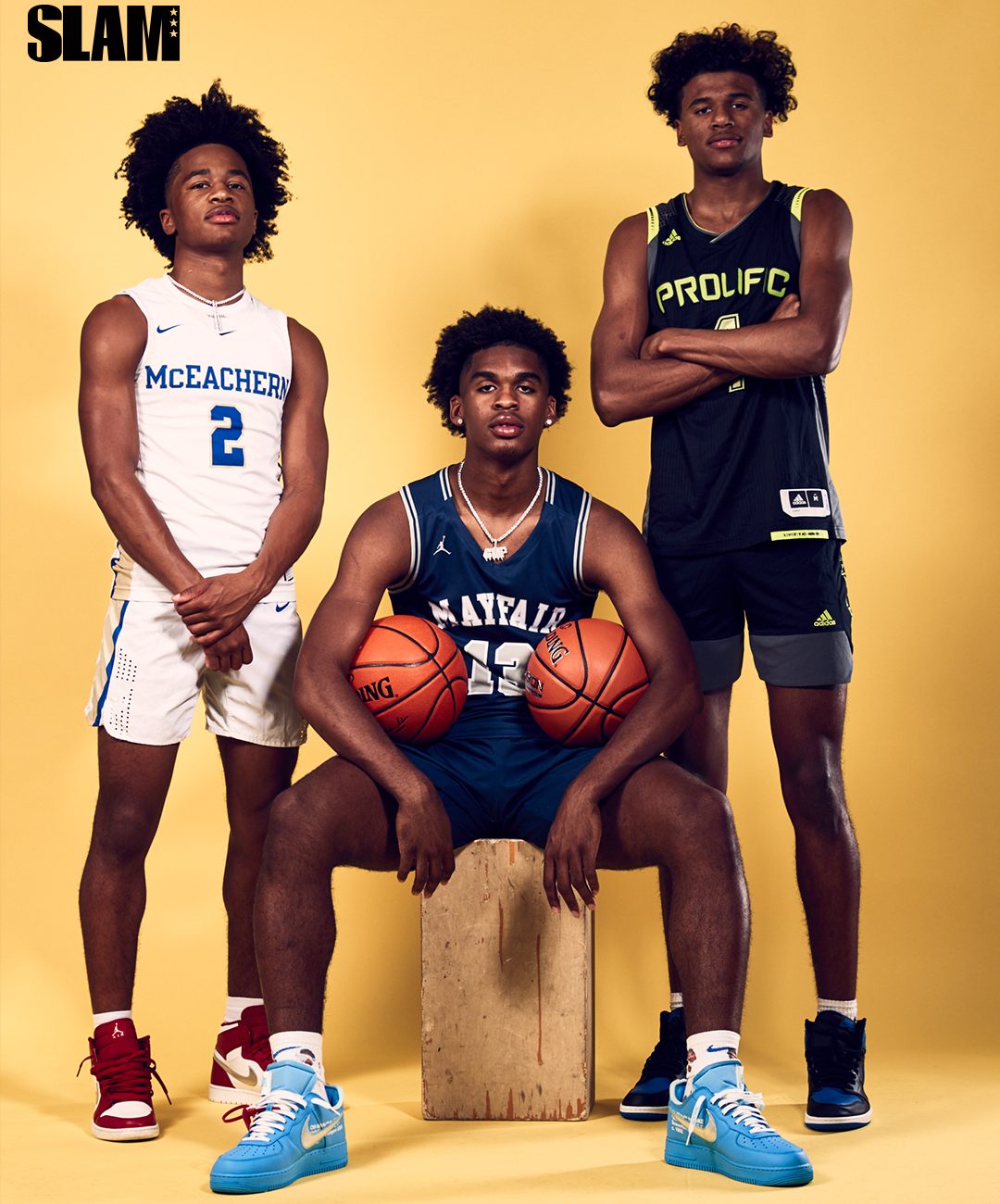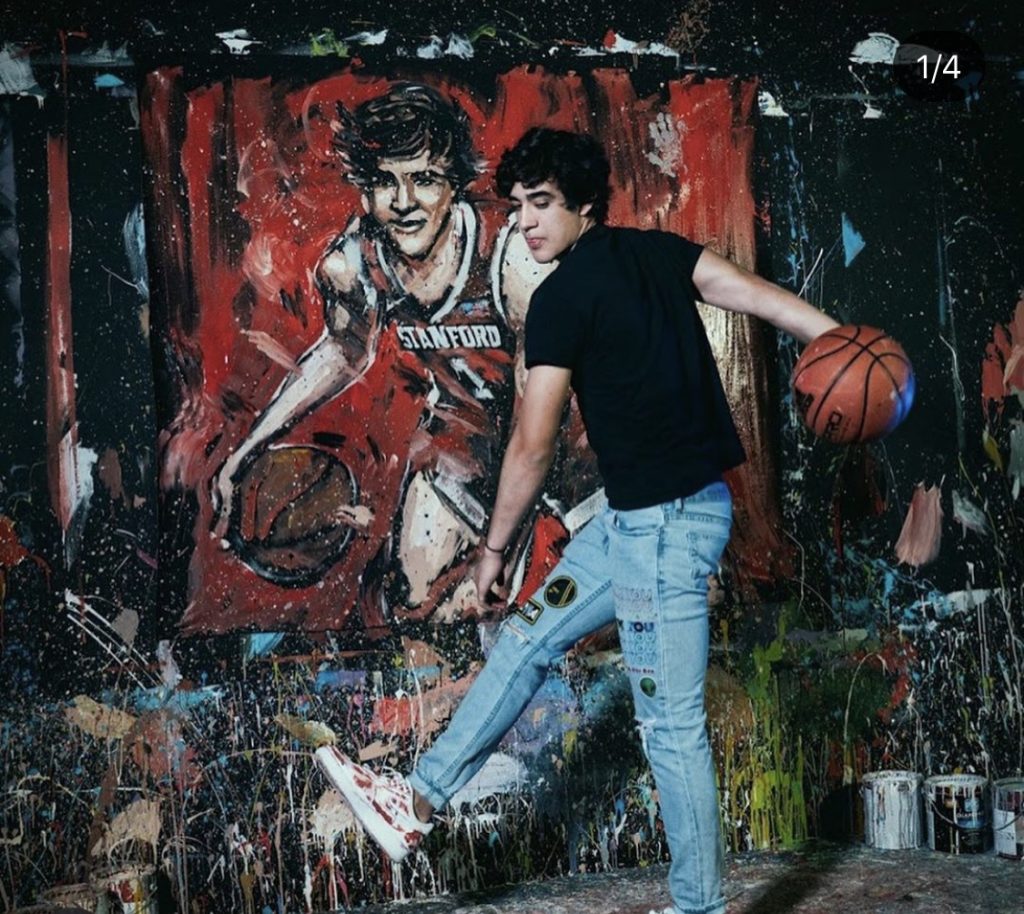On January 4, the Target Center, home of the NBA’s Minnesota Timberwolves, was near capacity. The nearly 16,000 fans were not there to see the Timberwolves, who were on the road preparing for a game against the Cleveland Cavaliers. The fans packed the arena for a boy’s high school basketball game between Minnehaha Academy of Minnesota and Sierra Canyon of California in the Chipotle Clash of Champions. Minnehaha featured Jalen Suggs and Chet Holmgren, both ranked in the top 10 in the class of 2020 and 2021 (all rankings will be from 247Sports Composite ranking, which uses an algorithm to create ratings and rankings collected from major media recruiting services). Sierra Canyon was led by Ziaire Williams and BJ Boston, No. 5 and 7 in the 2020 class, respectively. Both players transferred to the private school for their senior year, making it one of the few true powerhouses in the country.
The real draw for the game was freshman Bronny James Jr., son of Lakers superstar and future Hall of Famer LeBron James. Thousands of fans swarmed the seats to try and get a glimpse of the next great, and potentially future king of basketball, a 15-year-old rotation player still adjusting to the speed and physicality of the high school game.
That is the current state of high school basketball.
Players with over 500,000 social media followers and features in magazine. Bronny James leads all high school basketball players with over 5 million followers on Instagram and dozens of fan accounts. He has also introduced the basketball world to teammates who have gained their own fanbases.

James plays in an era much different than his father, who played for St. Vincent-St. Mary in his hometown of Akron, Ohio. Back when LeBron played, high school athletes played for local fans and college scouts. Games were just beginning to be televised on a semi-regular basis when players like James and Sebastian Telfair were the main draw.
Because high school hoops were so localized, it was difficult to get other media markets to care. LeBron was so polarizing that he was able to break that barrier but, as we now know, he became a once-in-a-lifetime player. Many talented players weren’t able to play at the next level simply because of lack of exposure. That all changed with the boom of smartphones and media platforms that allowed for videos to be disseminated globally almost instantly, chiefly YouTube. Players’ highlight reels, called mixtapes in the sports world, could be viewed not only by recruits but sports fans alike, thus creating a wider net for fans and followers.
Media takeover
That is where media companies like BallisLife, Overtime and SLAM, among others, come into play. They specialize in highlighting the play and lives of boys and girls basketball players around the country. Media companies like these have played a huge part in growing the sport and making these players more popular than even some NBA and WNBA players. BallisLife specifically helped pioneer the coverage. Now, a lot of their high school content consistently outperforms NBA content. Just as Arek Kissoyan, who runs the company’s media team.
“As the sport has grown, we’ve seen our high school highlights, like Bronny James and Sierra Canyon, get significantly more traction than a lot of our NBA videos.”
Kissoyan has worked at the company since its inception in 2005. He believes they were critical in introducing a lot of the sports world to high school basketball as its own entity.
“We like to take credit that we started this whole school thing, following high school basketball. ‘Hey, we’re seeing all these NBA guys, it would be awesome if we cover them before they get to the NBA when they’re playing for their local high school against high school competition and let’s see some crazy stuff,’”he said. “Of course that turned out to very true. It made for great entertainment. We were basketball junkies.”
Like every company, BallisLife noticed a turning point that saw them really take off and become a premiere basketball media outlet. It came with the growth of social media and the ease of sharing videos instantly of high school players like Lamelo Ball and now-NBA rookie Zion Williamson putting playing on a ridiculous level on a nightly basis.
“I think when the internet just became more accessible,” Kissoyan said. “It got to a point where it was a lot easier for anyone to grab a camera and do what we do and find success or be able to be seen. That’s when we saw the biggest change.
Fifteen years after it was created, the company has 5.4 million followers on Instagram, close to 700,000 followers on Twitter, nearly 1.5 million page likes on Facebook and over 860 million total views on YouTube. Because they are so visible and well known, they get access to almost any basketball player in the world. Because BallisLife covers teenagers, they want to ensure they are highlighting players in a positive way. Kissoyan understands the company’s need to keep up and even stay ahead.
“Do what we’re doing now, just on a bigger scale. We cover the top 50, 100 players,” Kissoyan said. “There are a lot of talented local players and we need to identify with them too and use BallisLife to help people whether it is to get a college scholarship or what not. To make sure BallisLife is a players brand and not just a media company.”
Huskies time to shine

One of the players and teams that his site has covered is Paris Dawson, head coach Josh Giles and the Centennial Huskies of Corona, California. Centennial went 29-5 this season, their best finish in 10 years. They made it to the California state championships and lost to rival Harvard Westlake. They ended the season ranked 23rd in the U.S. in Max Preps’ Boys Basketball Top 25. They were led by Dawson, who will play at Portland State in the fall. Centennial isn’t a household name like Sierra Canyon or Mater Dei, but Dawson appreciates the work accounts like BallisLife have done recently to shine the light on smaller programs that have maintained consistent success.
“They see the talent and they see everyone rising to the occasion when they get to college,” Dawson explained. “People coming out that no one has ever seen because they’ve been at a lower level school. They’re taking the time out to see those players.”
The increased presence of cameras on the sideline is new for the Centennial Huskies. But for such a successful program, it means nothing and pales in comparison to the real goal: winning. Giles, who won this year’s LA Times Boys Basketball Coach of the Year, understands the added attention and scrutiny but focuses on what’s important.
“We’re here to play the game. So we try to block that kind of stuff out and we just focus from game to game to game and, once the game is over, that game’s over,” Giles said. “Win or lose, you can’t get it back so we’re always kind of focused and moving on to the next.”
More than just a ranking
The Centennial Huskies were one of eight California teams in Max Preps’ Top 25, five more than the next closest state. According to top high school recruiting site 247 Sports, individually, 5 out of the top 10 high school seniors in the 2020 recruiting class live in California. Evan Daniels, who has covered basketball recruiting for almost 13 years and currently acts as director of recruiting for 247 Sports, sees the media as playing a big part in creating celebrities and branding high school boys.
“Social media is now a big portion of recruiting. It’s changed how the kids can control their narrative a lot more,” Daniels said. “Coaches use it to recruit players. Players use it to release their commitments or sent out videos of themselves. These kids have been able to build brands for themselves too. It’s a lot different than it was 10 years ago.”
With celebrity status comes added pressure to perform at an even higher level. Team success is important but individual rankings and a growing brand are equally as important. Some of the players live up to these lofty expectations while others never amount to more than the number of stars they have.
“There obviously is some pressure. I think that comes with the territory now because these kids have a lot more eyeballs than maybe they used to,” Daniels explained. “The truth is, if I had a million Instagram followers when I was 14 or 15, I don’t know that I would be normal either.
Homegrown talent

One of those kids who has had to live with the pressure is 17-year-old high school junior Isa Silva of Jesuit High School in Carmichael, California, a suburb of Sacramento. Silva is a top-35 player in the class of 2021 who committed to Stanford in late April. He’s been in situations where opponents have used the camera to try and make a name for themselves against him.
“Oh it happens all the time with other players thinking in their head, ‘it’s time to prove a point.’ But it’s fun, I like to compete and get after it,” Silva said. “If someone wants to challenge me, I’m up for it and I’m excited for it when it happens. As long as they respect the game, it’s fun.”
Instead of going to events like junior prom and playing in the spring and summer basketball circuits because of the coronavirus pandemic, Silva has used the extra time to get back to the basics of his game. The training and practice will be key for his all-important senior year.
“Not having that competition part forces me to compete against myself and get back to working on the fundamentals with my trainer,” Silva said. “The last few weeks have really been about getting back to the basics to prepare for next year and even more cameras.”